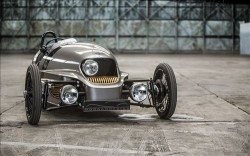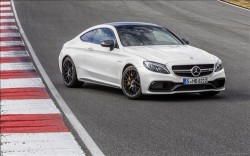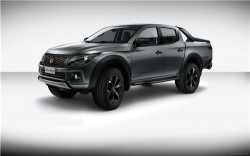Wallpapers
 Founded in Britain, Lotus is very much a specialty outfit, with output
limited to high-performance racecars and sports cars known for their
sleek and lightweight designs. Though its cars are prized by
enthusiasts seeking maximum handling performance, Lotus has never been
particularly keen on sales volume, and it rarely has more than one or
two models for sale at a time.
Founded in Britain, Lotus is very much a specialty outfit, with output
limited to high-performance racecars and sports cars known for their
sleek and lightweight designs. Though its cars are prized by
enthusiasts seeking maximum handling performance, Lotus has never been
particularly keen on sales volume, and it rarely has more than one or
two models for sale at a time.
The marque was founded by racing enthusiast Anthony Colin Chapman. The
first Lotus was built in 1948, and used by Chapman to compete in races.
By 1955, Chapman had officially formed Lotus Cars Ltd. A company
milestone was reached two years later with the unveiling of the
innovative Lotus Elite. This remarkably light coupe owed its
featherweight status to its fiberglass unibody construction. Though the
use of fiberglass for a car's body wasn't unique, the Elite was the
first vehicle to use this material both in its skeleton and its skin.
The resultant weight savings helped the Elite to distinguish itself at
Le Mans and other notable races around the world.
The 1960s saw Lotus expanding its line with the addition of the Elan.
First available as a roadster, the car offered a twin-cam engine,
four-wheel disc brakes and a four-wheel independent suspension. Hardtop
versions were later offered. By 1967, Lotus had added the Elan Plus 2
to its lineup. Dubbed Lotus' first family car, the Plus 2 was just as
sporty as the Elan, but more practical thanks to a bigger cabin and the
addition of two jump seats.
Lotus discontinued the Elite in 1972, but the name was revived in 1974.
The new Elite was a four-passenger model with a 160-horsepower engine.
Two years later, the Lotus family grew yet again, with the addition of
the Esprit. The two-seat sports car continued Lotus' ethos of
lightweight design, and it was instantly recognizable due to its
distinctive wedge-shaped exterior and appearance in two James Bond
movies.
Movie stardom aside, this was not a good decade for Lotus. The brand's
vehicles had evolved significantly since the first Elite cruised off
showroom floors. Lotus cars of the 1970s were bigger, costlier and more
expensive than their predecessors, and the brand had muscled its way
into a segment populated by the likes of Ferrari and Porsche. Lotus
cars were now premium-priced exotics; unfortunately for the brand, this
segment saw a dramatic fall-off in demand in the wake of that era's
fuel crisis, a fact that caused the automaker to suffer significant
losses.
In 1986, General Motors took full control of Lotus and created Lotus
Cars USA in 1987. That relationship lasted until 1993, when GM sold
Lotus to Bugatti. Bugatti's ownership was even shorter; Lotus was sold
to a Malaysian firm in 1996. The same year, Lotus began producing the
flyweight Elise, a car that would quickly become the company's main
product and financial savior. The Elise was finally imported to North
America in 2004 after safety and emission considerations were overcome.
Today, Lotus still remains true to Chapman's original desire of
producing lightweight and race-oriented sports cars. With tight cabin
accommodations and minimal comfort and storage features, modern Lotus
cars make poor grocery-getters. But for the enthusiast looking for a
car that offers world-class handling and style at a reasonable price,
the Lotus brand is hard to beat.
Views: 28841
[Source: Edmund's ]
Latest Wallpapers
Following is the list of recent pictures updates on our site.
DieselStation Social

















